

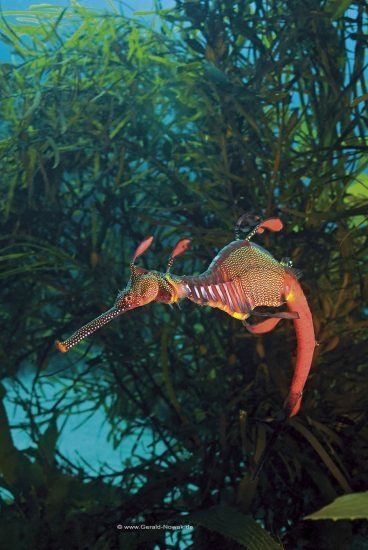
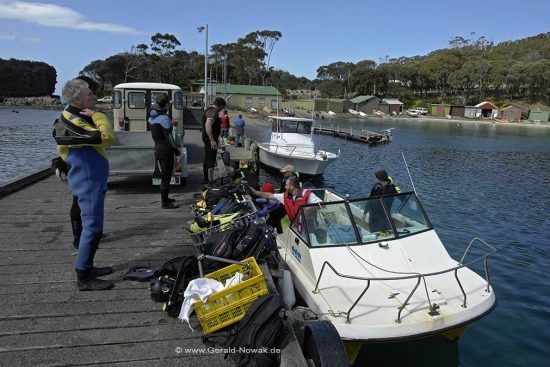
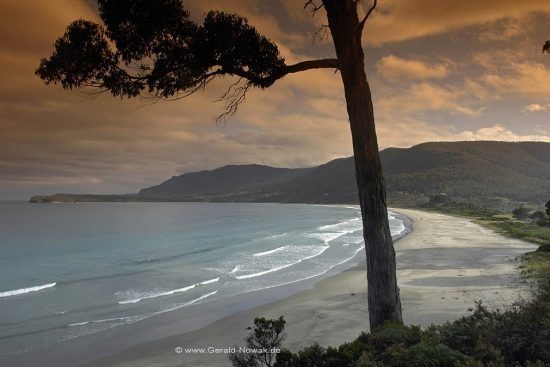
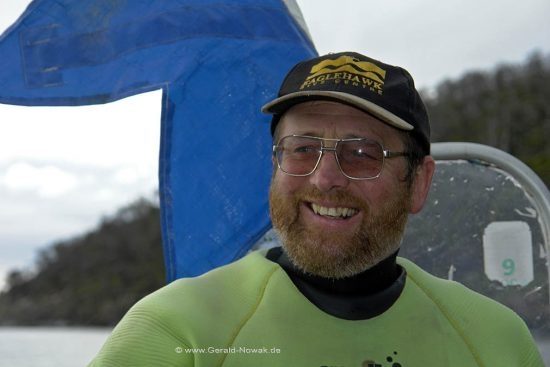
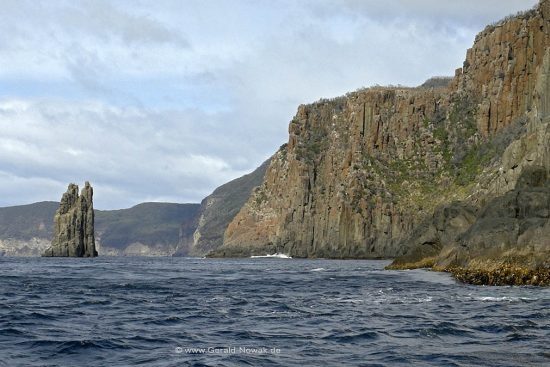
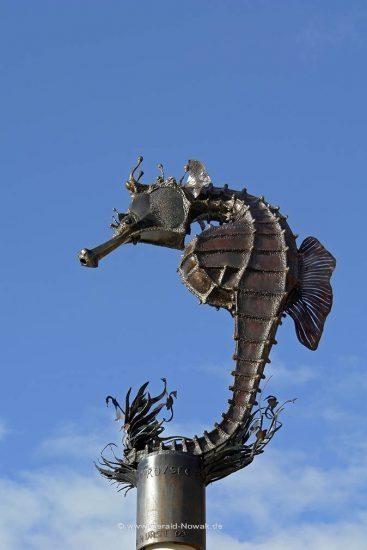
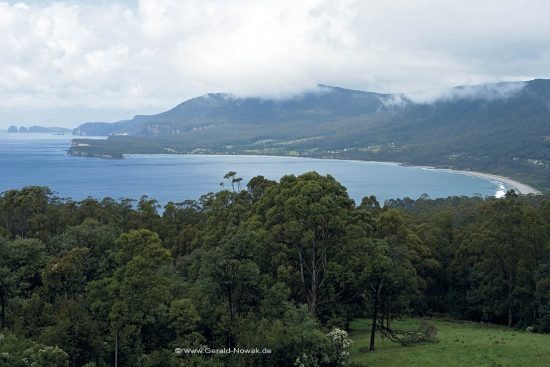
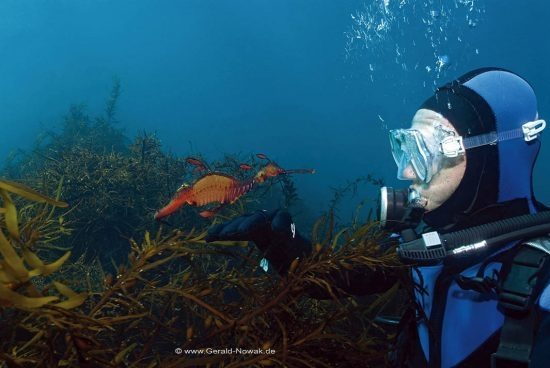
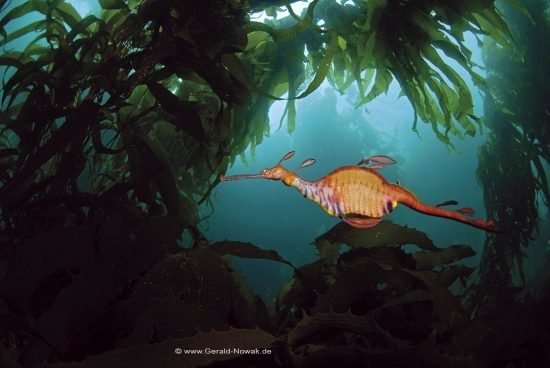
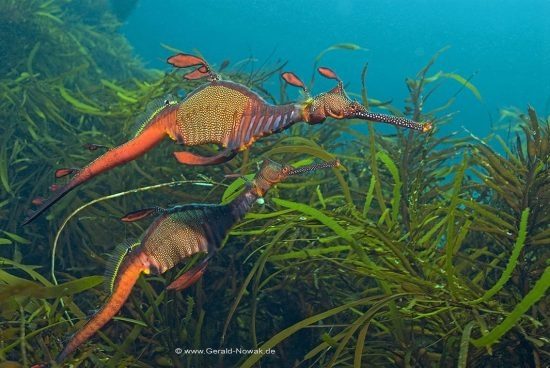
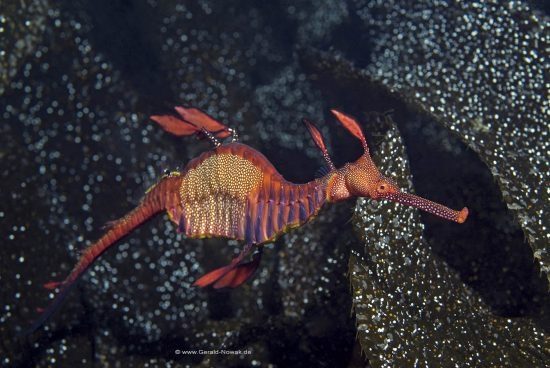
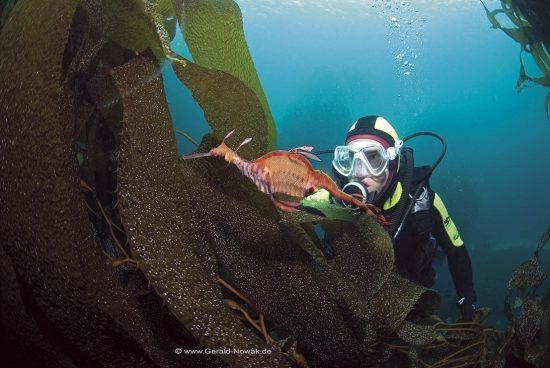
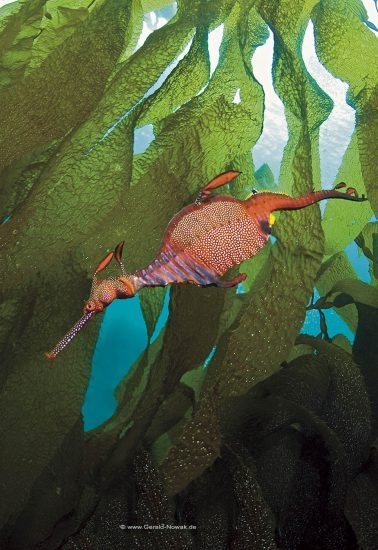
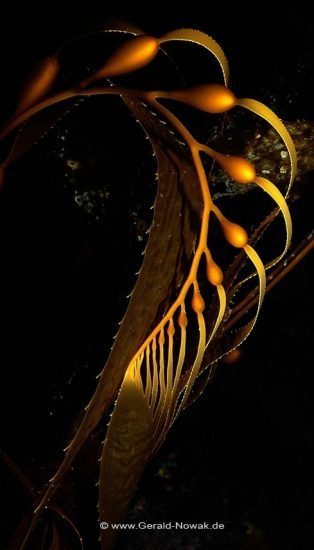
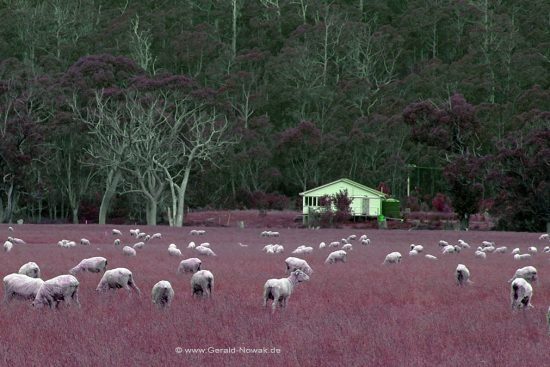
Kelp forests
Not many divers from Europe know this part of the world. The flight from Europe passes over a number of tropical dream destinations – absolute highlights both for divers and sun worshippers alike. Closer, cheaper and warmer.
So why should someone fly so far when everything is so much more expensive on the island of Tasmania? The thought does cross your mind, but anyone who comes to Tasmania does so for a good reason. There are forms of life here which can’t be found anywhere else in the world.
A dive in Fortescue Bay is one of the highlights on offer at the Eaglehawk Dive Centre. Head of the team, Mick Baron, manoeuvres the dinghy among the swaying blades of giant kelp before he sets the anchor. He makes sure to land in one of the clearances in the kelp forest. Under ideal conditions, kelp can grow between 30 and 50 cm per day (12-20 inches). Sadly however, the unique kelp ecosystem is in decline. Due to various environmental influences, water pollution and overexploitation of natural resources, kelp forests are disappearing alarmingly fast. Not in Fortescue Bay, where there is thankfully still a large area of giant kelp forest (Macrocystis pyrifera).
The metres-high, rubbery plants have huge leaf-like structures known as blades, and are home to a diverse number of species. One of these is the Weedy Seadragon (Phyllopteryx taeniolatus), which is found only around Tasmania and the southern coastline of Australia. This slightly comical creature has a head similar to that of a seahorse and a body that looks like a tiny dragon – hence the name.
The Seadragon can change colour to blend in with the kelp and is therefore very difficult to find.
Mission accomplished
Mike is an expert at finding these animals. Just moments later, he discovers a Weedy Seadragon among the kelp. This one appears to be ignoring the diving group. It sinks down slowly onto a small patch of sand directly in front of Mick.
Here are some tiny shrimps congregated over an anemone. It looks as if the Seadragon is pretending to be a piece of drifting seaweed so that it can approach its prey unnoticed. When it is close enough to the shrimps, it opens its mouth quick as a flash and sucks them in. Deception and camouflage are the order of the day in the kelp forest.
If a dive is cut short in this part of the world, it’s not for fear running out of air. It’s more likely to be the cold, which slowly but steadily creeps, even through the best-insulated of neoprene suits. No matter how cute these little creatures are, even if they look like "Fuchur", the lucky dragon from "The Neverending Story", cold is cold.
With the thought of a hot tea promised after the dive, nobody from the dive group hesitates, then Mick gives the signal to ascend.
It was a great dive and there are many reasons to come back to explore more of the dive spots around Tasmania.
See here for more info
 Gerald
Gerald 28th June 2017
28th June 2017 Tasmania, Australia
Tasmania, Australia 